Abstract 4/2015
Table of content
Kazimierz Jamroz, Lech Michalski – Transport in researches and education in Gdańsk University of Technology
Kazimierz Jamroz, Jan Kempa, Judyta Rychlewska, Tomasz Mackun – Method for determining area of good visibility at pedestrian crossing in Poland
Kazimierz Jamroz, Wojciech Kustra, Anna Gobis, Daniel Gajewski – Risk management method on the streets’ network in Warsaw
Joanna Żukowska, Tomasz Radzikowski – Regional and local safety databases in Poland – experiences and challenges
Jacek Oskarbski, Michał Miszewski, Karol Żarski – Traffic control within bus queue jumps on the example of Gdynia
Abstracts
Kazimierz Jamroz, Lech Michalski
Transport in researches and education in Gdańsk University of Technology
Summary: Over111 yearsof existence the Gdańsk University of Technology (GUT)can bedivided into threeperiodsof its operation: the period under Prussian rule, the period of the Free City ofDanzigand the period ofthe Republic of Poland. Duringits existencethe number ofstudents and academic teaching and research staffhas grownmany times as well as scope of researches has been expanded.During the whole periodof its existencemore than110 thousandalumnus have graduated from the University. The Transport department is oneof the specialtiesthat has been existingat the GUTfromthe beginning. The article presents brief history ofthe Gdańsk University of Technology, the outline of scientificresearchesin the field of Transport and characteristics of education at this department.
Keywords: Gdańsk University of Technology, history, transport, research, teaching
Kazimierz Jamroz, Jan Kempa, Judyta Rychlewska, Tomasz Mackun
Method for determining area of good visibility at pedestrian crossing in Poland
Abstract: One of the importantfactors affecting accidentswith pedestrians crossing the roadare limitations ofareasof goodvisibilityof pedestriansand vehiclesat pedestrian crossings. In Polandthis issue isunderestimated. This paperproposes amethod of determining areaof goodvisibilityat pedestrian crossingsin Poland.The method has been developed on the basis of international experiencesand own studies. The methodincludes: a measure to estimate vehiclesight distanceapproaching the crossing from the pointof view ofpedestrianswilling to pass the road, measure to estimate a distance of the visibility of pedestrians crossing the road or demonstrating intention to entera crossingfrom the point ofview of the driver of approaching vehicle and rules of verification the area of goodvisibility in order to possible improvement.
Keywords: roads, pedestrian crossings, visibility, method of estimation
Kazimierz Jamroz, Wojciech Kustra, Anna Gobis, Daniel Gajewski
Risk management method on the streets’ network in Warsaw
Abstract: The paper presents application of risk management methods in the road infrastructure safety management in cities. The first part outlines the legal conditions and international experience, which were premises for the development of risk assessment methods on the elements of linear and point infrastructure on the basic urban road network in Warsaw. The second part presents adopted assumptions, description of the objects of analysis, period of analysis, specification of the main problems and selected measures of collective and personal risk. The third section describes the methods of data preparation on road network (division into homogeneous sections, selection of intersections, pedestrian crossings) volume and traffic safety, which are necessary for the implementation of this risk assessment method. Two following parts include a procedure to carry out the classification of roads and intersections due to collective and individual risk. The last part of the paper describes the procedures to identify and rank the most dangerous sections, intersections and pedestrian crossings on the road network in Warsaw.
Keywords: streets’ network , risk assessment, method, streets sections, intersections,
Joanna Żukowska, Tomasz Radzikowski
Regional and local safety databases in Poland – experiences and challenges
Abstract: Creationan uniform system for the collection and dissemination of information on the road safety, allowing to obtain a reliable picture of both the current situation and trends observed in the past should be a priority step in the development of an integrated road safety management system in Poland. Organizational, legal and financial solutions should be provided to ensure functioning of such a system, both at the national, regional and local levels. Collected data should be in the future supplemented by data from hospitals and additional data, e.g. on the road network, traffic intensity, or on the behavior of road users. Thinking about development of this system methods and tools to facilitate the collection, analysis and monitoring of road safety should be developed, including measures to support road safety management system.
Keywords: road traffic, road traffic safety, safety databases
Jacek Oskarbski, Michał Miszewski, Karol Żarski
Traffic control within bus queue jumps on the example of Gdynia
Abstract: Currently it is more common in the cities to implement different means improving public transport vehicles operations. One of these means is implementation of ‘bus queue jumps’ which are usually accompanied by the bus lanes or dedicated traffic signals for public transport vehicles. There are some negative aspects of bus queue jumps functionality and this paper is intended to review them according to problems appeared in the city of Gdynia. The main objective is to indentify current traffic signal control within queue jumps on particular examples and to indicate their advantages and disadvantages. Secondly, based on data taken from the Integrated Traffic Management System TRISTAR for one of the Gdynia bus queue jump. Authors suggested method for estimating the time lost on intersection equipped with public transport dedicated traffic signals. Based on results of analyses further problems have been listed in areas referring to public transport vehicles drivers behaviour. Finally, main characteristics referring to traffic control within the bus queue jumps were shown and further observation and research directions were indicated.
Keywords: traffic control, public transport priority, bus queue jump

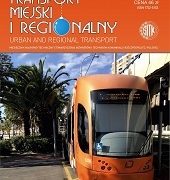
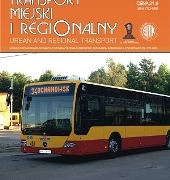 SITK RP
SITK RP 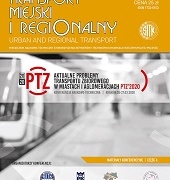
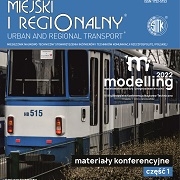 Wydawnictwa SITK RP
Wydawnictwa SITK RP 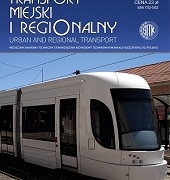
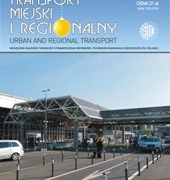 SITK RP
SITK RP 
 SITK RP
SITK RP SITK RP
SITK RP